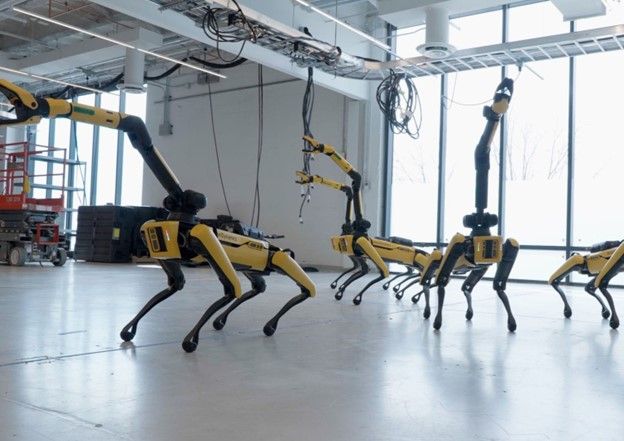Here’s something interesting in the world of robotics. In an episode of America’s Got Talent, it features robots named Spot as they performed a live synchronized dance routine to the tune of Queen’s hit song “Don’t Stop Me Now.”
Along the middle of the performance, one of the robots suffered a rare hardware failure. Despite this situation and with only a few seconds to make a decision, the show must go one. Four of the robots were able to finish the dance routine in flying colors. The other one was able to able to recover. The crowd went wild.
Purpose and Impact of Spot

It’s understandable that some of you might have been confused as to why they decided to do this. But if you look at it in the bigger picture, these public performances are more than just entertainment. These serve as robotics experiments in terms of hardware reliability, software reliability, synchronization, timing, and real-word constraints.
Aside from this, having Spot perform on stage helps in changing the public’s perception. From just robots being scary and mysterious, to something that’s inspiring, approachable and fun. Spot is more than just a tool. It evokes wonder especially in our current era of visual robots, AI, and so on.
These performances also serve as a marketing, public outreach, and recruitment. People can now see what robots can do for them, and this would also spark public interest for people to get more involved into robotics.
How They Did It
Ever wondered how the Spot robots were able to perform as they should? The choreography was done using Boston Dynamic’s custom drag-and-drop tool called Choreographer. The animators were able to map the moves. Then they test and repeat the process until everything runs smoother as it should.
Broader Usage
Aside from being a good source of entertainment, Spot is also used in many industrial and commercial settings. Examples are inspections and bomb squad support. Performing to the public also helps the robot’s capability when it comes to real-world utility.
When you think about it, dance routines, entertainment, and public displays actually contribute to robotics education. It makes schools and students get involved in using the tool Choreographer as a way to experiment with programming robots.
Innovation from their performance (the synchronization, new animations, stability under stress situations) often feedback into more practical tasks for the robot. Pushing its boundaries in choreography lets engineers find what’s possible for Spot in the present and what isn’t so that there will be more continuous developments for it in the near future.